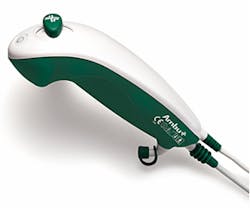Image sensor goes down the throat
An image sensor fromOmniVision Technologies (Santa Clara, CA, USA) has been designed into Ambu's (Glen Burnie, MD, USA) aScope 2, a single-use intubation videoscope intended for medical procedures such as percutaneous dilational tracheostomy (PDT).
PDT, also referred to as bedside tracheostomy, is the placement of a tracheostomy tube without direct surgical visualization of the trachea. This is considered a minimally invasive, bedside procedure that may be easily performed in the intensive care unit or at the patient’s bedside - with continuous monitoring of the patient’s vital signs.
In the development of the aScope 2 videoscope, the engineers at Ambu chose to use OmniVision's 2.1 mm by 2.3 mm OV6922 CameraChip image sensor, whose size makes it especially attractive for medical imaging applications.
The sensor's 1000 mV/lux-sec sensitivity also allows the camera to deliver clear video at 60 fields per second even in the challenging conditions encountered in the human respiratory system.
-- by Dave Wilson, Senior Editor,Vision Systems Design
